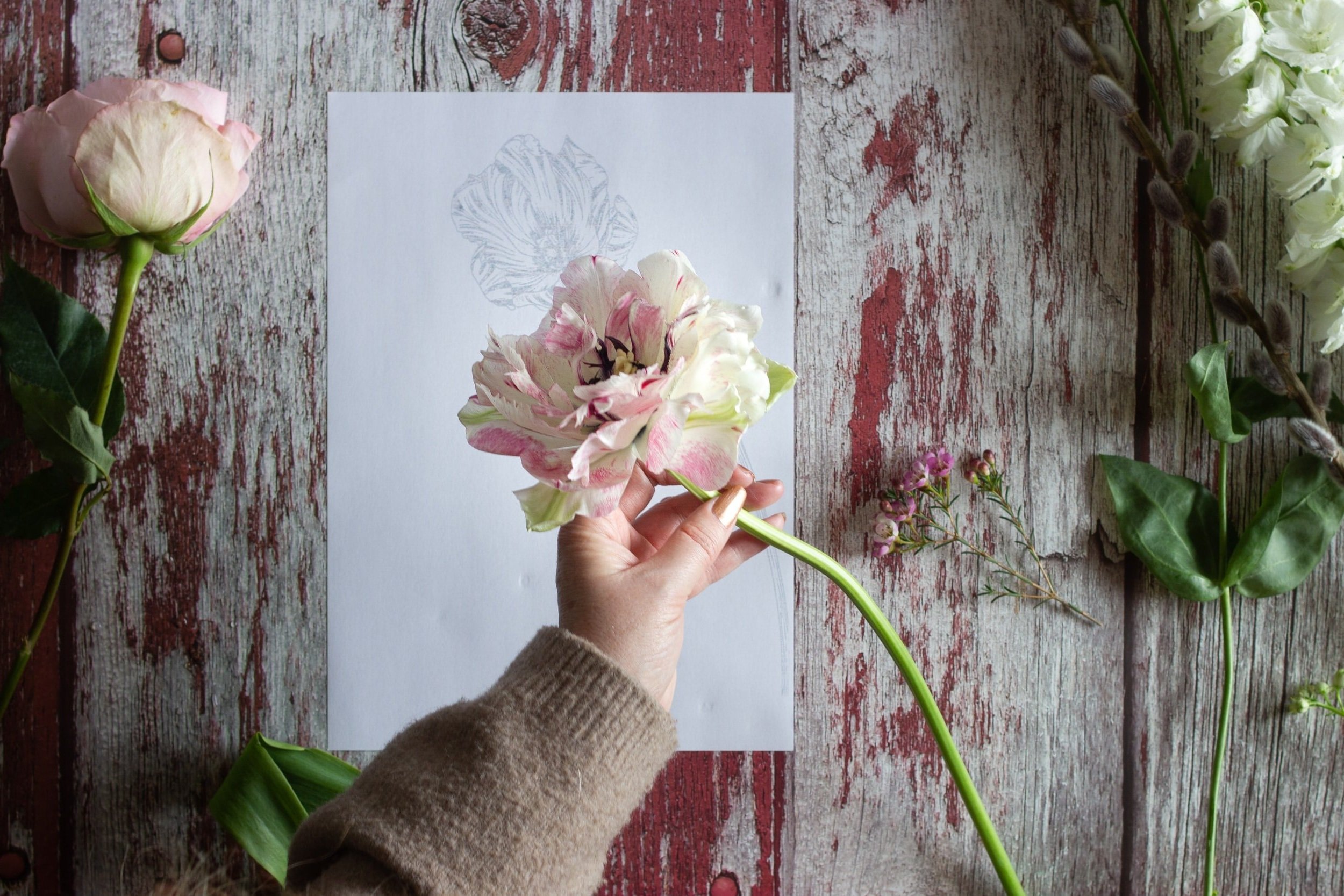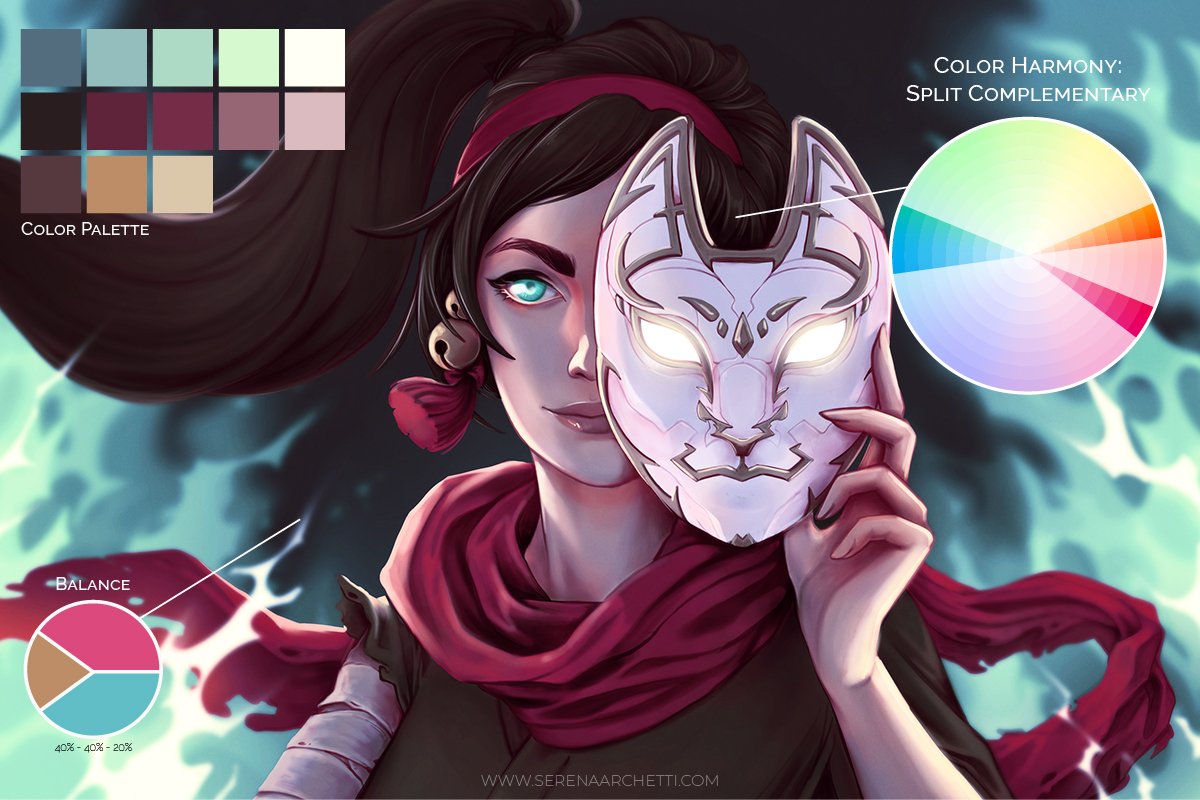5 Tips That Will Instantly Make You Better At Digital Art
Do you ever feel like you are missing something to be able to take your digital art to the next level but you can't put your finger on it? You are not alone. I have been there too and I am here to give you 5 tips on how to become a better digital artist by sharing a little story of my own.
When I first started out with digital art, I would look at other artists' work and feel so discouraged because their work looked so much better than mine.
(I know we shouldn't compare our work to others but as you may know, it is hard not to sometimes.)
I would sit there and wonder how they did it. How did they make their work look so effortless?
In the beginning, I thought I was missing some tool, a fancy drawing tablet, brush or secret technique that they were using.
So I launched myself into an endless search for the perfect software, hardware, and brushes to use, never really stopping in one place to improve my skills.
I wasted so much time and money buying professional equipment and software that I didn't need thinking it would magically improve my art.
And after a while, I became so overwhelmed with all the options that I became paralyzed and didn't want to create anything anymore.
I was stuck in this vicious cycle for months until I realized that none of that mattered.
I realized that what I was really missing were the foundational skills of art.
As soon as I realized that, I started to focus on honing my skills and learning the basics of art. I started improving immediately and became so much more confident in my work.
The thing is, you don't need the latest and greatest gadget to create great art.
You just need to learn and master the basics, once you have them you can apply them to any software or medium and it will always give you great results.
I can't go over everything in one email but here are 5 tips I wish I had known when I first started out, that will instantly make you a better digital artist:
1. Use references
References are your friends. Use them often, especially when you are starting out. Drawing from imagination is great but it takes a lot of practice ( with references ) to be able to do it well. When you are starting out, use references as often as you can to help you learn how to draw the different elements you want to include in your work.
2. Mind your contrast
Your work will instantly look more polished and professional if you add the right amount of contrast. Make sure to have a good range of light and dark values in your work, to add depth and dimension.
Extra tip: Having your lightest colours next to your darkest colours will instantly attract attention to that spot so you can use them strategically to guide the viewer's eye to the image's focal point.
3. Embrace color theory
Color is such an important part of digital art, and there is so much to learn about it that I have dedicated an entire blog post to everything you need to know about color theory. For now here are a few quick tips to get you started:
Pick a Color Harmony
There are many different ways to combine colours but a good place to start is by picking a harmony such as Complementary, Analogous, Triadic, Split Complementary, Tetradic etc.
Once you have picked a harmony, start experimenting with different values, saturation and tints of those colours to see what works best.
Create a Signature Colour Palette
A great way to keep your colours consistent throughout your work is to create a signature colour palette that you can use over and over again.
To do this, start by picking a few of your favourite colours and saving them in a swatch file. Then, when you are starting a new project, load up your swatches and start experimenting!
Use Color Psychology
Color has the ability to affect our moods and emotions. So it's important to be aware of the messages you are trying to communicate with your colours.
For example, red is often associated with danger, anger and passion while blue is associated with peace, serenity and calm.
Keep this in mind when you are choosing colours for your work and try to pick colours that reflect the mood or message you are trying to communicate.
If you want to learn more, check out this blog post where I break down the meaning of each color.
4. Check your composition
Before you start working on a new piece, take a step back and think about the composition.
How do you want the viewer's eye to move through the image?
What is the focal point of the piece?
Are there any elements that are distracting from the main message of the image?
Asking yourself these questions before you start will help you to create a more well-rounded and visually appealing piece.
Here are a few quick tips for composing your work:
The Rule of Thirds
The rule of thirds in art.
One of the most basic and easy-to-remember rules of composition is the Rule of Thirds. The idea behind this rule is to imagine your image divided into nine equal sections using two vertical and two horizontal lines.
Then, place your main subject or focal point at one of the intersections or along one of the lines. This will help to create a more balanced and pleasing composition.
Leading Lines
Leading lines are another great way to guide the viewer's eye through your image. Look for elements in your scene that can act as leading lines and position them in a way that leads the eye towards the focal point of your image.
For example, a road or a river winding through a landscape can act as leading lines and lead the viewer's eye towards the mountains in the distance.
Simplify your composition
One of the most common mistakes that artists make is trying to include too many elements in their work. This can often make the image feel cluttered and busy, making it more difficult for the viewer to focus on the main subject.
If you find that your composition is starting to feel busy, try removing some of the elements that are distracting from the main message of the image.
5. Deliberate Practice
A small amount of deliberate practice beats a large amount of "just draw a lot!" kind of practice any day.
If you want to get better at digital art, you need to be intentional about your practice.
This means taking the time to break down the skills you want to learn and practice them in a deliberate and focused way.
For example, if you want to get better at drawing faces, start by practising head construction, then move on to facial features, hair, expressions, etc.
Drawing from imagination without any structured approach or specific goals in mind is not going to help you to improve as an artist.
So take the time to figure out what skills you want to learn and then create a practice schedule that will help you to focus on those skills. It will save you so much time and energy in the long run!
I hope you found these tips helpful! If you have any questions or suggestions, please feel free to leave a comment
I hope these tips were helpful and that you find them useful in your own
By breaking down the skill into smaller pieces, you will be able to focus your practice and see more significant improvements in your work compared to just trying to draw from imagination without any structured approach or specific goals in mind.
Conclusion
Digital art is a complex and ever-evolving field, but by following these simple tips, and learning the fundamentals of art, you will be well on your way to creating beautiful and impactful digital art no matter what new shiny software or tablet comes out!
So if you want to create digital art that will stand the test of time, be sure to focus on the basics and practice with purpose. You will be amazed at how far you can go!


